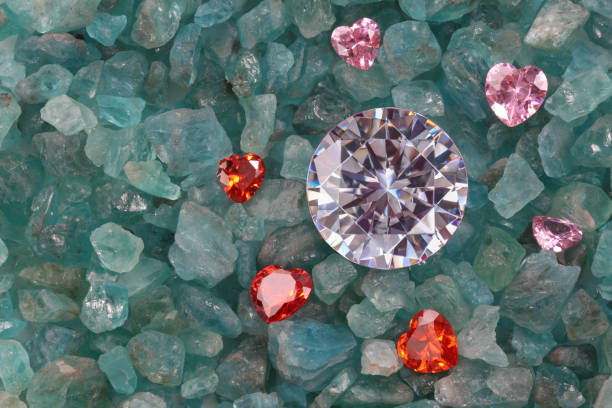When it comes to choosing between diamonds and zirconia, many people are often confused due to their similar appearance. However, understanding the key differences between these two stones can help you make a more informed decision. In this article, we’ll explore the key distinctions between diamonds and cubic zirconia (CZ), covering factors such as durability, appearance, and cost, to help you choose the best option for your needs.
What is the Difference Between Diamond and Cubic Zirconia?
The primary difference between diamonds and zirconia lies in their composition and origin. Diamonds are natural gemstones, while cubic zirconia is a synthetic material created in a laboratory setting. Though they may look similar to the untrained eye, these two stones have distinct characteristics that set them apart.
Durability
One of the most significant differences between diamonds and cubic zirconia is their durability. Diamonds are the hardest known natural substance, rated 10 on the Mohs scale of hardness. This makes diamonds incredibly resistant to scratching, ensuring they maintain their brilliance for a lifetime.
Cubic zirconia, on the other hand, is much softer, scoring around 8 on the Mohs scale. While it is still durable enough for everyday wear, it is more prone to scratches and may lose its shine over time. Therefore, diamonds are often considered a more practical option for those seeking long-lasting jewelry.
Appearance
While both diamonds and cubic zirconia can sparkle beautifully, their appearance differs in a few key ways. Diamonds are renowned for their exceptional brilliance, which is due to their unique crystal structure. This allows diamonds to reflect and refract light in ways that create their signature sparkle.
Cubic zirconia, though it can shine brightly, often lacks the same level of brilliance as a diamond. It tends to exhibit a more “glassy” appearance, and its sparkle is not as intense or multifaceted. Additionally, diamonds often have natural inclusions, known as “blemishes” or “imperfections,” that add to their uniqueness. In contrast, cubic zirconia is usually flawless, which might make it appear slightly less natural.

Cost
One of the main reasons many people opt for cubic zirconia is its affordability. Cubic zirconia is much less expensive than diamonds, making it an attractive option for those on a budget. While diamonds can cost thousands of dollars, cubic zirconia can be purchased for a fraction of the price, making it a popular choice for costume jewelry or engagement rings on a budget.
Which is the Right Choice for You?
Choosing between diamond and cubic zirconia ultimately comes down to your priorities. If you are looking for a gemstone with superior durability and lasting value, a diamond is the better option. However, if budget is a primary concern and you don’t mind sacrificing some durability and sparkle, cubic zirconia can be a great alternative.
For a detailed comparison and further insights into the pros and cons of both stones, you can visit diamond vs zirconia.
Conclusion
In conclusion, both diamonds and cubic zirconia have their own set of advantages and disadvantages. Diamonds are known for their longevity and unmatched brilliance, making them a perfect choice for those seeking a timeless piece of jewelry. On the other hand, cubic zirconia offers a budget-friendly alternative with a similar aesthetic but with lower durability. When making your decision, consider what is most important to you—whether it’s cost, durability, or appearance—and choose accordingly.
If you want more information on cubic zirconia vs diamond, be sure to visit the link provided above!
